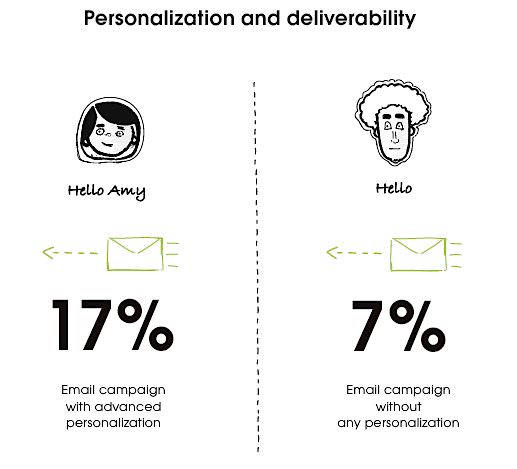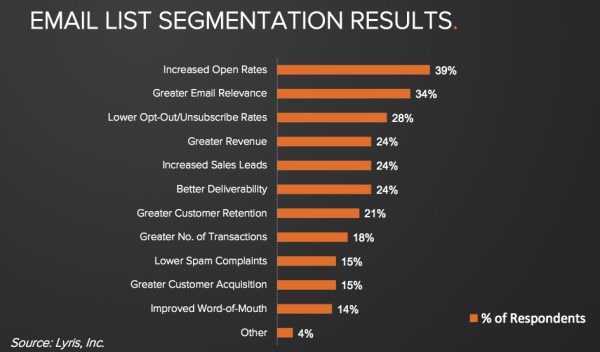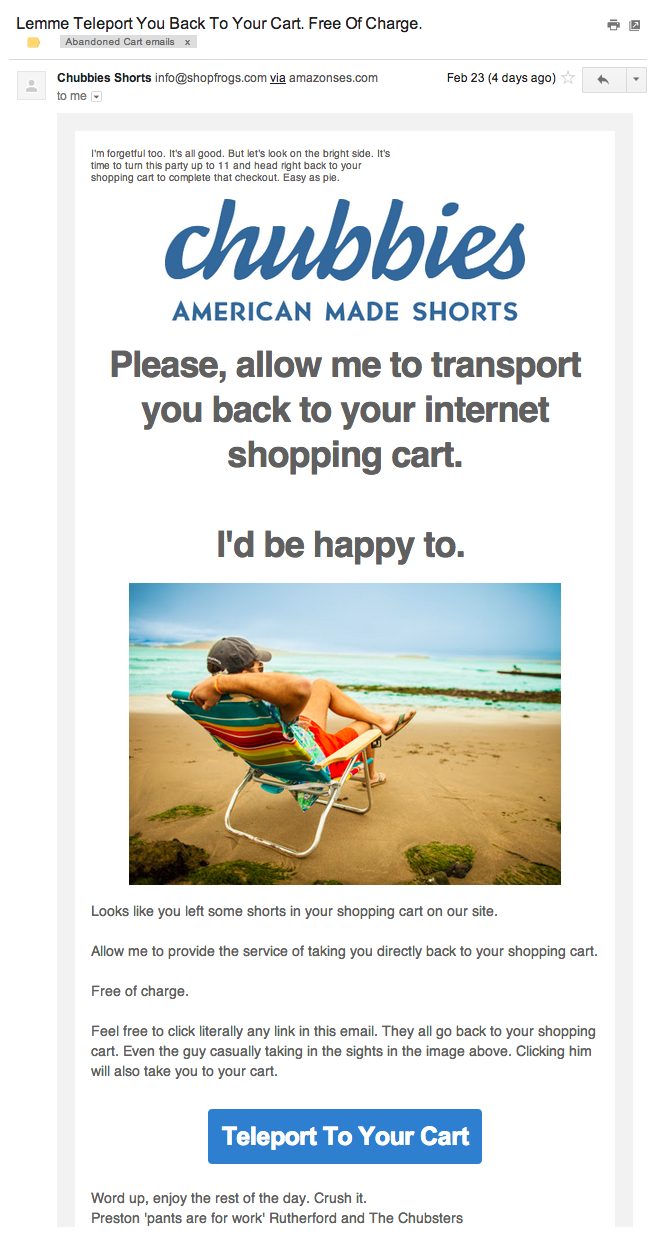We’ve all sent a cold e-mail at one point or another – those e-mails that you send to someone with whom you’ve had no prior relationship. Think of it as a much less obtrusive version of a cold call that can also save you from the awkwardness of getting rejected over the phone.
Cold e-mails can be very effective sales tools. Some people have reported a 29% response rate, others have seen a 10% increase in open rates when the e-mail is personalized, and still others have enjoyed up to 60% response rates and 80% engagement rates from cold e-mails.
Are Cold E-mails Canned Spam?
One of the reasons that cold e-mails can be so effective is that they aren’t spam. There’s a distinct difference between bulk e-mail and targeted one-to-one e-mails to a business audience.
In other words, while your recipient might screen a cold call when they don’t recognize the number, they’ll very likely see your cold e-mail in their inbox and be more receptive to scanning through it.
The Controlling the Assault of Non-Solicited Pornography And Marketing (CAN-SPAM) Act allows you to send e-mails to business people you don’t know. However, you’ll be required to comply with rules laid out by the Federal Trade Commission (FTC). Thankfully, these rules are quite easy to follow:
- Don’t misrepresent yourself. The information in the e-mail (particularly the “From,” “To,” and “Reply-To” fields) should clearly identify who you are.
- Keep your subject lines real. You’re pitching a product, so don’t use click-bait like “Your order receipt.”
- If your e-mail is an ad or coupon, label it as such.
- Include your business address. You can place this in your signature.
- Provide an opt-out option. Let recipients know that they can ask you to stop or direct you to a more appropriate person to contact. You can have this in the P.S. to make sure it doesn’t interfere with your message.
- Honor your word. You said they could ask you to stop. If they do, then stop.
- Know about everything that’s sent on your behalf. For example, you might need to hire a company for e-mail outreach. This doesn’t take the responsibility off your hands. Make sure that the company or person doing it for you understands the rules.
Approached the right way, cold e-mail can be an invaluable tool in closing sales. Done poorly, it could end up costing you not just time and money, but also your brand reputation.
Let’s look at how you can send out cold e-mails the right way.
Learn More: Cold Emailing: Best Outbound Sales Automation Tools
Setting Up Your Cold E-mail Campaign
Unlike cold calls where you have an opportunity to convince someone to listen, with cold e-mails you have no control over what a recipient will do once your e-mail lands in their inbox.
Less is always more here, so keep your e-mail as short and to the point as possible and personalize what you can.
Step 1: Start with an E-mail Address on a Different Domain
You probably didn’t expect to have to create a new e-mail address on a separate domain. But there’s a reason we recommend this.
You’re not exactly sure what will work in your specific situation with different prospects. You’ll have to experiment a lot. So if you use an address from your main domain, you risk ruining the reputation of your company and other e-mail addresses that are already set up on that domain.
The safer option would be to set up a new domain reserved for outbound campaigns to new audiences.
Once it’s set up, don’t start sending e-mails immediately. Give it time to gain a reputation (at least 3 weeks) and warm up the e-mail address (see Step 4 below).
Step 2: Set Up SPF and DKIM Records
If you’re not sure what these acronyms mean, here’s a brief explanation and a more detailed one you can check later.
- SPF is short for Sender Policy Framework and is a security measure designed to make sure malicious people don’t send e-mails on your behalf. It’s based on communication between DNS servers. Once set up on your DNS server, the SPF will take charge by defining the IP addresses that can be used to send e-mails from your domain, letting the destination server know that it is, in fact, you who has sent the e-mail.
- DomainKeys Identified Mail (DKIM) is the standard that adds a protective layer on top of the SPF. It’s the additional authentication that tells the receiving DNS server that yes, it really is you.
To test whether you’ve set things up properly, you can use a tool such as this one from Mail Tester.
If you’ve done everything correctly, the results should look something like this:
On the other hand, this is what you might see if you didn’t set things up right:
Setting up the records may vary between various e-mail service providers, but you can easily find articles on the web or contact your e-mail host support to help you out.
Learn More: How to Get Higher Email Open Rates (Without Being Spammy)
Step 3: Set Up “From” Field and Real Personal Data
Remember that your identity will impact the deliverability of your e-mails. Therefore, you want to use real personal data.
- Set up a “From” line that serves the purpose of your campaign.
- Your prospects will most likely want to validate your identity. If they use Gmail and a plugin like Rapportive, LinkedIn will be integral. Therefore, go to LinkedIn and add this new address to alternative e-mail addresses.
- If you use Gmail, complete your Google Account with real data and a recent photo of you.
Step 4: Warm Up Your New E-mail Address
The new e-mail address should be adequately warmed up before you start sending out cold e-mails, especially if the domain is brand new. By “warming up,” we mean using the e-mail address manually for some time before you start automating.
This helps it earn reputation and can greatly impact deliverability.
Check out this article to learn how to properly warm up your new e-mail address.
Step 5: Meanwhile, Collect Quality Leads
As you configure your e-mail, earn your domain some reputation, and warm up your new e-mail addresses, start collecting high-quality prospects. This isn’t just to make sure you don’t waste time on the wrong people; it also improves deliverability.
According to ReturnPath, even if just 0.1% of your recipients mark your message as spam, your e-mails will no longer be delivered – you could even end up on a spam list. Wow, right? That 0.1% is just one prospect out of 1,000.
Quality, personalized, and targeted e-mails will go a long way to avoid being flagged as spam. Click To Tweet
Ask yourself these questions:
- Do you really know your prospects? Send e-mails to high-quality leads. If you send to uninterested people, it’s very likely that they will mark it as spam. Here’s how to build a prospect base.
- Are you collecting valid data? If not, see Step 6.
Step 6: Verify Your Prospects’ E-mail Addresses
You want to make sure that, above everything, your prospects’ e-mail addresses are valid. If your e-mail is sent to an invalid address, it bounces. And this isn’t just a matter of accepting it and moving on; it could impact your whole campaign.
Data by ReturnPath shows that if as little as 2-10% of your e-mails bounce, all your e-mails could stop being delivered.
Your e-mail service provider might have a built-in system for validating e-mail addresses before they are sent out. However, you can’t rely on just that to catch everything.
Before you send the data to your e-mail service provider, use a tool like Hunter’s E-mail Verifier to validate the addresses.
Learn More: 5 Ways Cold Emailing Can Help Generate Backlinks
Step 7: Segment Your List of Prospects
“Campaign” is such a big word. In reality, you don’t need to collect thousands of e-mail addresses before you kick off the campaign.
Start small with a list of about 20 high-quality prospects. If you have a huge list, segment if and start with smaller groups.
Segmenting allows you to even create better e-mail copy. It also allows you to cultivate valuable relationships without the pressure of having to reach out to a huge number of people all at once.
Remember that, like any campaign, you will need to experiment. Segmenting your list reduces the chances of messing up your whole list because you did something wrong or were ignorant of certain facts.
Step 8: Personalize Your E-mails
Sending the same or similar copy to many addresses sends the wrong signal to your e-mail service provider and anti-spam systems. This may lead to you getting blocked.
To avoid that, make sure your e-mail text is filled with personalization. This shouldn’t be hard if you’ve been segmenting your lists and if you really know your prospects.
Prepare multiple versions of your e-mail for each segment. Test out what gets high open and click-through rates.
Step 9: Choose Your Words Carefully
Spammy e-mails all have one thing in common: they use the same trigger words. The bad news is that you, an innocent cold e-mailer, could be doing the same thing without knowing it.
This alarms anti-spam systems, making them block your messages. To stay on the safe side, you need to know which words are spam triggers:
Step 10: Limit the Number of Images and HTML
Consider this: Your cold e-mail is supposed to be like a message that you send to a friend. How many images and fancy HTML templates do you really need in order to have a casual conversation with your friend?
If you can, avoid fancy fonts and pictures. E-mails sent to many people that look super salesy may not go over too well. Remember that a cold e-mail is not the same as a marketing e-mail to which contacts have subscribed. Including too much HTML affects your deliverability.
So, unless absolutely necessary, don’t include images.
Do not send cold e-mails that look like this.
Step 11: Know Your E-mail Provider’s Sending Limits
Each e-mail service provider comes with its own limits in terms of daily (even hourly) number of e-mails sent. Know this beforehand to avoid unpleasant surprises.
Learn More: Cold Email Templates that Get Responses
Step 12: You’ll Need to Follow Up, So Plan for It
According to studies:
44% of marketers give up after only one follow-up, but 80% of sales require 5 follow-ups. Click To Tweet
Put quite simply, you have to send a follow-up e-mail because it increases the response rate of your readers.
So, make plans to automate your follow ups. Think in terms of e-mail nurture campaigns — not just individual e-mails. Your scheduling should be well thought out and your host’s sending limits taken into account.
Happy E-mailing!
Whether you’re trying to generate hundreds of prospects or validate a potential business venture, cold e-mail outreach can be a great outbound marketing technique. However, it must be approached cautiously with a well-informed strategy.







